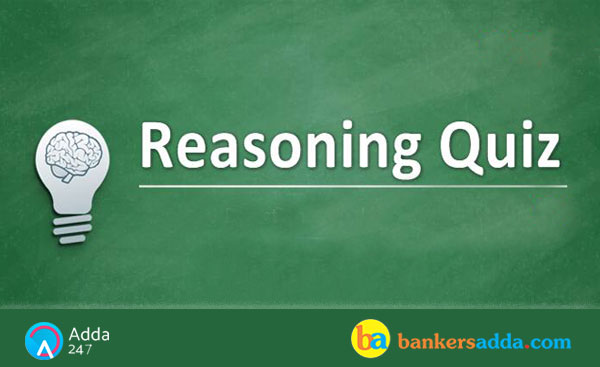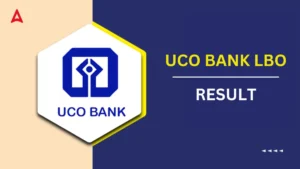
Direction (1-5): In each of questions below are given four statements followed by four conclusions numbered I, II, III and IV. You have to take the given statements to be true, even if they seem to be at variance from commonly known facts. Read all the conclusions and decide which of the given conclusions logically follows from the given statements disregarding known facts.
Q1. Statements:
All smarts are ugly.
Some uglys are beautiful.
No beautiful is charming.
Some charmings are angry.
Conclusion :
I. Some angrys are ugly.
II. Some charmings are smart.
III. Some beautifuls are smart.
IV. Some charmings are ugly.
Q2. Statements:
Some towns are tehsils.
All tehsils are jilas.
Some jilas are villages.
All villages are smarts.
Conclusion :
I. Some smarts are jilas.
II. Some jilas are towns.
III. Some villages are tehsils.
IV. Some smarts are tehsils.
Q3. Statements:
Some outs are lbw.
Some lbw are sixes.
Some sixes are balls.
Some balls are bolds.
Conclusion:
I. Some bolds are lbw.
II. Some sixes are outs.
III. No bold is lbw.
IV. Some balls are outs.
Q4. Statements:
Some elbows are knees.
All knees are kicks.
Some kicks are jabs.
All jabs are chokes.
Conclusion:
I. Some jabs are elbows.
II. Some chokes are knees.
III. Some kicks are elbows.
IV. Some chokes are kicks.
Q5. Statements:
All woods are metals.
All metals are irons.
All irons are steels.
All steels are rocks.
Conclusion:
I. Some rocks are woods.
II. Some steels are metals.
III. Some irons are woods.
IV. Some rocks are metals.
Directions (6-10): Study the following information carefully and answer the questions which follow–
In a college, there are 8 professors, P, Q, R, S, T, U, V and W of 8 different subjects, philosophy, psychology, geography, economics, algebra, French, German, and Arabic not necessarily in the same order. They are sitting around a circular table facing the centre of the circle at an equal distance.
U is third to the left of the professor of economics, who is opposite to one who is second to the right from R. The professor of German is not near to P but near the one who is opposite to R. W and Q are adjacent to each other but both of them are not professor of French. The professor of philosophy is second to the left of the professor of Arabic, who is next to the professor of German and V. the professor of French is seated opposite to V. The professor of geography is neither S nor near to R. The professor of Psychology is third to the right of W.
Q6. Who is immediate right of V?
Q7. Which of the following pair of professors is sitting opposite to each other?
Q8. Who is the professor of Algebra?
Q9. What is the position of U with respect to the given information?
Q10. If ‘V’ is related to ‘T’ and ‘P’ is related to ‘R’ in a certain way, which of the following would ‘S’ be related to in the same pattern?
Q11. Statement: Reinforcing its commitment to green initiatives, railways will explore its future course of action to prevent pollution. Issues related to environment like solid waste management, pollution control, water management and energy management will be discussed at a workshop on ‘Environmental challenges before Indian Railways and solutions’.
Which of the following points will strengthen the decision taken by the Railways?
I. Introduction of bio-fuel and solar energy in train operation.
II. Installation of rain water harvesting facilities at major stations.
III. Waste water recycling plant is also being planned in which recycled water will be used for washing and horticulture purpose.
IV. Initiatives such as LED light fittings to reduce power consumption and use of five percent bio-diesel in diesel locos.
V. Introduction of water audit to assess consumption and wastage at major stations.
Q12. Statement: The government is set to overhaul annual targets for public sector lenders, ending a focus on size that has long encouraged banks to inflate their loans and deposits at the year-end to hit growth objectives. Banking and government sources said that the new targets, to be discussed at meeting with top state bank officials, would focus on efficiency, with objectives set around return on assets, or return on equity, and controlling bad debts.
Which of the following points can be inferred from the given information? (An inference is something that is not directly stated but can be inferred from the given information.)
Q13. Statement: Prime Minister may slash the Cabinet Committee on Investment’s (CCI) threshold limit by half to Rs. 500 crore to get more stalled projects moving again as the government’s term nears its end. Most of these projects involve sunk investments that are yet to fructify due to pending last-mile clearances, so in many cases, the grant of a clearance would help add to the economy’s output over time as these projects get commissioned.
Which of the following is not in line with the Prime Minister’s statement?
Q14. Statement: Most of pre-poll surveys show that in this election Congress-led UPA alliance will get a maximum of 100 seats. The poll forecast that the BJP would win the lion’s share of the vote in many of the big states that typically decide the fate of the polls.
Which of the following is the best reason for the above mentioned statement?
Q15. Statement:- Because no employee wants to be associated with bad news in the eyes of a superior, information about serious problems at lower levels is progressively softened and distorted as it goes up each step in the management hierarchy, the chief executive is, therefore, less well informed about problems at lower levels than his or her subordinates at those levels.
The conclusion drawn above is based on the assumption that
I. Problem solving ability is more important at higher levels than it is at lower levels of the management hierarchy.
II. Chief executives obtain information about problems at lower levels from no source other than their sub- ordinates.
Which of the following assumptions is implicit in the statement?





 GA Capsule for SBI Clerk Mains 2025, Dow...
GA Capsule for SBI Clerk Mains 2025, Dow...
 The Hindu Review October 2022: Download ...
The Hindu Review October 2022: Download ...
 UCO Bank LBO Result 2025 Out, Direct Lin...
UCO Bank LBO Result 2025 Out, Direct Lin...





